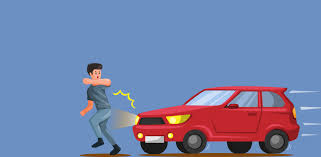Motor vehicle Laws Transnistria
Transnistria, a self-declared breakaway republic located between Moldova and Ukraine, has its own set of motor vehicle laws and regulations. While the region is not internationally recognized as an independent state, it operates with its own local government and laws. Below is an overview of motor vehicle laws in Transnistria:
1. Vehicle Registration and Licensing
Vehicle Registration:
- All motor vehicles must be registered with the State Automobile Inspectorate (part of the Ministry of Internal Affairs).
- The registration process requires the vehicle owner to provide proof of ownership, passport, and proof of residence in Transnistria.
- Upon successful registration, the vehicle is issued license plates, which must be clearly visible on both the front and rear of the vehicle.
Driver’s License:
- To obtain a driver’s license in Transnistria, individuals must be at least 18 years old.
- Drivers must pass a written exam on traffic laws and road signs, as well as a practical driving test.
- Transnistria issues its own driver’s licenses for local residents, but foreign licenses may be accepted for a limited time for foreign visitors.
2. Traffic Rules and Regulations
Speed Limits:
- Urban Areas: Speed limits within cities and towns are typically 50 km/h (31 mph).
- Rural Roads: Speed limits on rural roads are usually 60 km/h (37 mph).
- Highways: On highways, the speed limit is generally 90 km/h (56 mph).
- Speeding violations can lead to fines or other penalties.
Seat Belts:
- Seat belts are mandatory for both the driver and passengers in the vehicle.
- Failure to wear a seatbelt can result in fines.
Alcohol and Drugs:
- The legal Blood Alcohol Concentration (BAC) limit for drivers is typically 0.03%.
- Drunk driving is a serious offense, and drivers caught under the influence face fines, license suspension, or even imprisonment for severe cases.
Mobile Phones:
- Using a mobile phone while driving is prohibited unless using a hands-free device.
- Violators face fines for using a mobile phone while driving.
Pedestrians and Cyclists:
- Pedestrians have the right of way at marked crosswalks.
- Cyclists must use bike lanes where available and wear helmets for safety.
3. Vehicle Inspections and Emissions
Vehicle Inspections:
- All vehicles must undergo periodic inspections to ensure they are roadworthy and meet safety standards.
- Inspections check for items such as brakes, lights, tires, steering, and the exhaust system.
- A valid vehicle inspection certificate is required to operate the vehicle legally on the road.
Emissions Standards:
- Transnistria enforces basic emissions standards, particularly for vehicles with older engines.
- Environmental policies are gradually being introduced to reduce vehicle pollution, though enforcement can be lax.
4. Traffic Violations and Penalties
Speeding:
- Speeding violations can lead to fines, points on the driver’s license, or even license suspension for repeat offenders.
Drunk Driving:
- Driving under the influence of alcohol or drugs is punishable by heavy fines, license suspension, or imprisonment.
- Repeat offenders may face harsher penalties.
Reckless Driving:
- Reckless driving, such as dangerous overtaking, running red lights, or driving without due care, can result in heavy fines, license suspension, and potential imprisonment.
Other Violations:
- Failure to wear a seatbelt, illegal parking, and using a mobile phone while driving are punishable by fines.
- Unregistered vehicles or those without proper documentation may be impounded.
5. Public Transport and Taxis
Public Transport:
- Public transport in Transnistria consists mainly of buses, minivans, and trolleybuses that serve the main cities and towns.
- These vehicles are required to comply with safety standards and are subject to regular inspections.
Taxis:
- Taxis are available, and drivers must have a valid taxi license.
- Fares may vary, and it is recommended to agree on the fare before starting the journey, especially if the taxi does not have a meter.
6. Driving in Special Conditions
Rainy and Wet Conditions:
- During the rainy season, drivers are advised to reduce their speed and maintain extra caution on wet or slippery roads.
- Headlights should be turned on during periods of rain or fog for improved visibility.
Daytime Running Lights (DRLs):
- While daytime running lights (DRLs) are not a legal requirement, drivers are encouraged to use their headlights during the day to increase visibility.
7. Environmental and Green Initiatives
Electric Vehicles (EVs):
- Electric vehicles (EVs) are not yet widespread in Transnistria, but there are discussions regarding the adoption of cleaner technologies to reduce pollution from traditional vehicles.
Environmental Policies:
- The government has been introducing some measures to improve the environment and reduce the carbon footprint of the transport sector, though there is still a reliance on older vehicles.
8. Road Safety and Education
Driver Education:
- To obtain a driver’s license, individuals must attend a driving school that teaches road safety, traffic laws, and practical driving skills.
- Educational campaigns aim to raise awareness about seatbelt use, drunk driving, and safe driving practices.
Road Safety Campaigns:
- There are periodic road safety campaigns aimed at reducing accidents and improving driver behavior on the roads.
Conclusion
Motor vehicle laws in Transnistria focus on vehicle registration, driver licensing, and road safety. The region enforces laws related to speed limits, seatbelt use, drunk driving, and mobile phone use while driving. Penalties for violations include fines, license suspension, and imprisonment. Although Transnistria does not have the same level of infrastructure or strict enforcement as larger countries, the government is gradually working on improving road safety and environmental standards.




0 comments